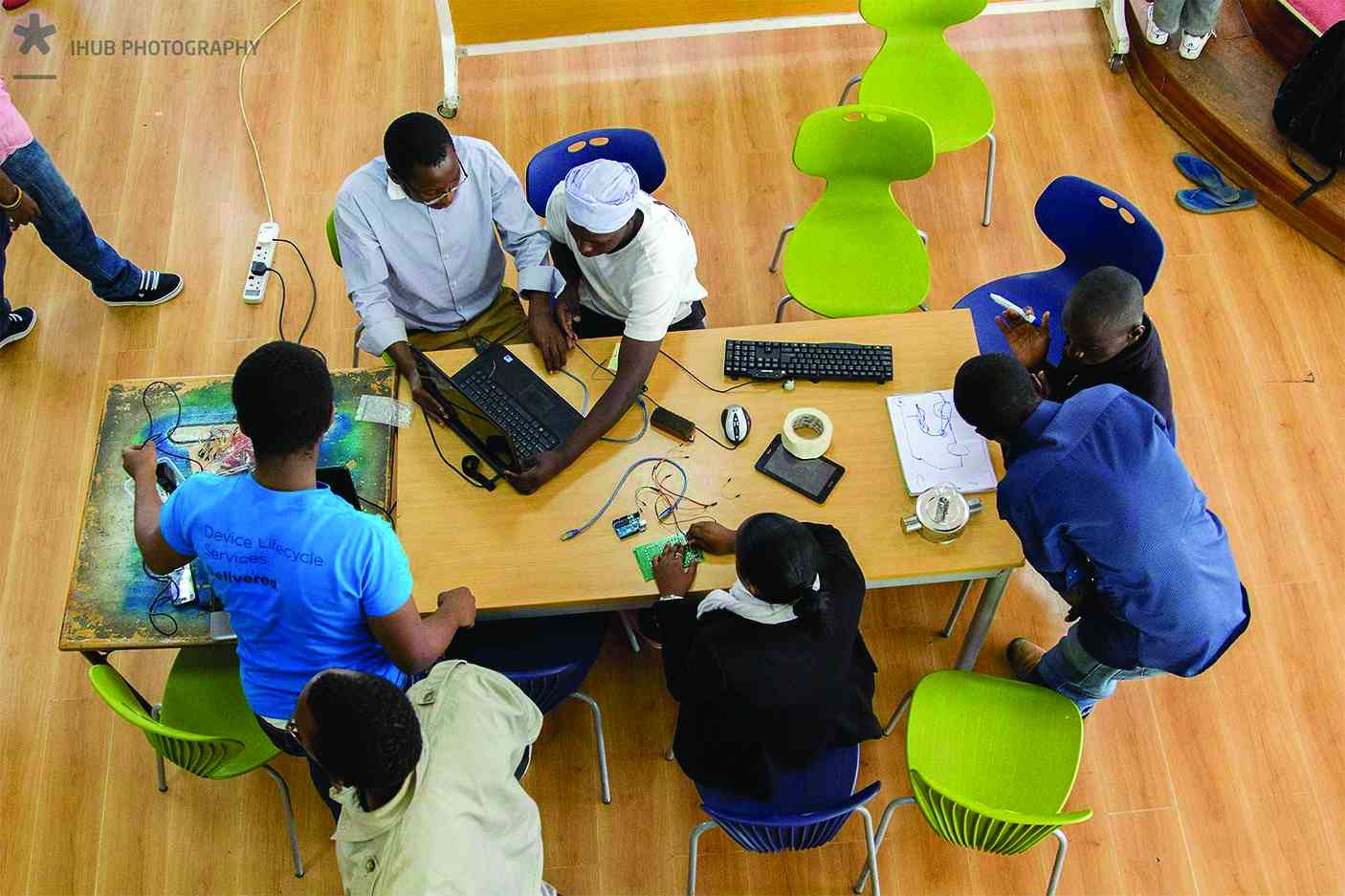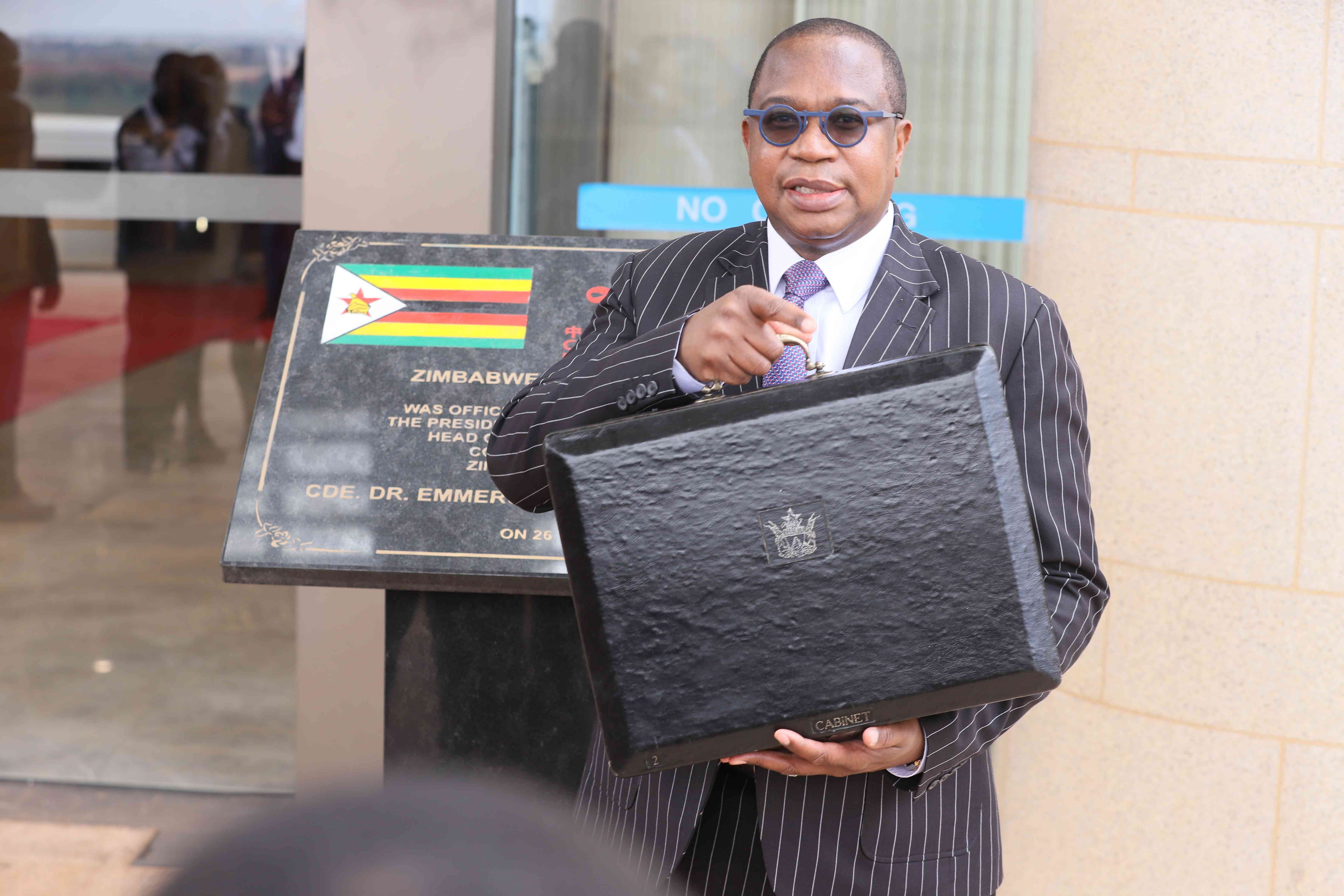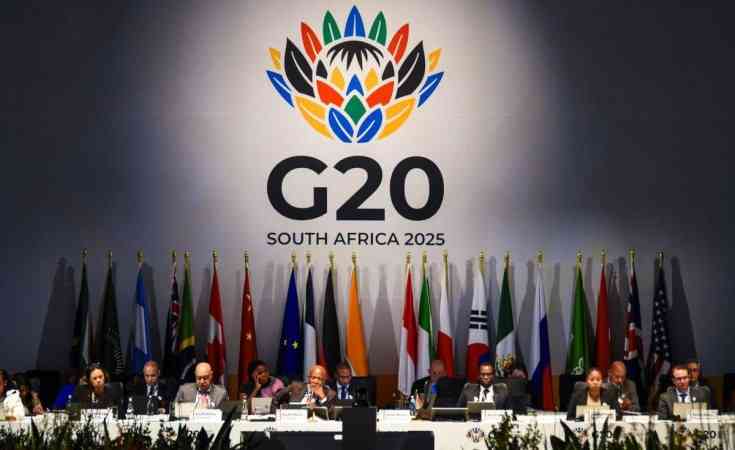
NO one is waiting for Zimbabwe to get its ducks in a row. If the current educational system cannot produce the innovators the country needs, then policy-makers must look outward for guidance and inspiration, while tailoring lessons to Zimbabwe’s unique context.
Innovation does not occur in a vacuum. It grows where governments actively convene problem-solvers, connect ideas to capital and create safe enabling spaces for experimentation.
Across Africa and in other regions, governments are actively strengthening education, entrepreneurship, research and public services to foster citizen-led innovation.
This instalment expands on those strategies, detailing how different areas, such as education and skills, research and development, entrepreneurship and public-sector innovation could be adapted to Zimbabwe’s aspirations.
The aim is to outline concrete opportunities for political will, investment and practical reform that could unlock local innovation, empower young Zimbabweans and create scalable ventures that contribute to inclusive growth.
Education, skills for the future
Africa-wide and regional progress offers a blueprint for transforming schooling into a launchpad for innovation. Key areas Zimbabwe could prioritise include curriculum reform, teacher development and industry partnerships.
Egypt: Integrating STEM, AI literacy at scale: Egypt has been modernising curricula with science, technology, engineering and mathematics (STEM) and artificial intelligence (AI) concepts, investing in teacher re-training and partnering with tech firms to build capacity in secondary and higher education. This lesson matters for Zimbabwe because it presents a scalable model for building a digitally-fluent workforce capable of supporting local startups and digital services. Zimbabwe could pilot AI literacy in selected districts while laying the groundwork for broader rollout.
- Mavhunga puts DeMbare into Chibuku quarterfinals
- Bulls to charge into Zimbabwe gold stocks
- Ndiraya concerned as goals dry up
- Letters: How solar power is transforming African farms
Keep Reading
Rwanda: Data literacy, digital skills for youth: Rwanda has initiated National ICT programmes in schools, boot camps, public–private partnerships (PPPs) to foster coding and digital entrepreneurship and emphasising on youth employment in tech and business services. This example is crucial for Zimbabwe as it demonstrates how early exposure to coding and data invariably creates a pipeline of tech-ready youth who are able participate in regional value chains.
Kenya: STEM in schools, global partnerships: Kenya has expanded STEM clubs, coding initiatives (eg, CS for Kenya), affordable devices, and university-industry alignment with fintech, health tech and agri-tech at the fore. This matters for Zimbabwe at it demonstrates how to connect classrooms to market-relevant sectors, enabling graduates to start small ventures and scale them.
SA: STEM pipeline and innovation ecosystems: South Africa has embarked on national efforts to improve teacher capacity, broaden STEM-rich schooling and expose learners to innovation hubs and maker spaces. Zimbabwe could take a leave from this move as it highlights the importance of hands-on, project-based learning and access to innovation ecosystems as a regular part of schooling.
Nigeria: Digital literacy, entrepreneurship education: Nigeria has embarked on coding, app development and digital marketing in schools and community centres, including partnerships to nurture student startups. This lesson is vital for Zimbabwe as it provides a practical blueprint for community-driven education that builds local tech capacity and startup mindsets.
China: Early AI literacy, STEM emphasis: In China they start AI education early. They have developed national standards, set up teacher academies for upskilling and made available broad AI literacy resources. This is relevant for Zimbabwe as it demonstrates the scalability of a national tech-literate culture, though Zimbabwe would need context-appropriate adaptations and safeguards.
Singapore: Future-ready education, skills transformation: Singapore is focused on curricula that emphasises critical thinking, coding, data literacy from as young as primary school. In addition there are strong partnerships where industry–university join to co-created curricula is via SkillsFuture credits. SkillsFuture Credit is a Singaporean government initiative providing financial credits to Singapore Citizens to encourage lifelong learning and skills development by paying for approved training courses to enhance their career prospects. Each citizen receives an opening credit (which does not expire) and additional top-ups are given periodically, with specific one-off top-ups for the mid-career demographic. These credits can be accumulated and used to pay for approved courses, helping Singaporeans adapt to the evolving job market and improve their skills. This is useful reference for Zimbabwe to learn from as the thrust is structured lifelong learning and strong industry ties to ensure skills stay aligned with job markets.
US: Broad STEM, computational thinking coverage: The United States funds federal and state STEM funding, maker spaces, university-industry programmes and applied research and development (R&D). This is a vital learning point for Zimbabwe as it emphasises the value of scalable programmes and diversified funding streams to sustain innovation ecosystems.
EU: Digital competences, lifelong learning: The European Union through Erasmus+ and Horizon Europe have been upskilling their citizens and beyond. Erasmus+ is the European Union’s programme for education, training, youth, and sport, running from 2021 to 2027, with a budget staggering budget of €26,2 billion (US$30,8 billion). It provides opportunities for learning mobility, developing partnerships and improving skills by supporting projects and exchanges for students, teachers, youth workers and organisations. The programme focuses on social inclusion, green and digital transitions and fostering young people’s participation in democratic life, with nearly 200 countries eligible to participate. On the other hand, Horizon Europe is a seven-year EU scientific research initiative to help develop a sustainable and liveable society in Europe. It is the ninth of the Framework Programmes for Research and Technological Development and the successor of the Horizon 2020 programme. In addition, the EU is involved in cross-border collaboration and open data to enable citizen-led innovation. The above points are valid for Zimbabwe as they show the possibilities of regional collaboration, standard-setting and open data as enablers of local innovation.
R&D, innovation ecosystems
A robust R&D and innovation system is essential to translate ideas into products and services with the potential to scale.
SA: R&D, innovation ecosystems: South Africa provides public funding via the National Research Foundation and Department of Science and Innovation, ensuring the triple helix that ensures university-industry partnerships and collaborations. In addition, South Africa has set up tech transfer offices. This is relevant for Zimbabwe as it demonstrates the importance of institutionalised support from research all the way to commercialisation.
Egypt: Innovation hubs, tech transfers: Egypt has created tech parks and university-linked incubators whilst modernising existing labs to attract investment. For Zimbabwe, this is a lesson that illustrates how research infrastructure often catalyse local startups and attract foreign collaboration.
Kenya: Innovation ecosystems, tech hubs: In Kenya, through the accelerators Nairobi’s iHub and Gearbox, startups are being enabled. iHUB is an innovation hub and tech community centre based in Nairobi, Kenya. iHUB serves as a nexus point for technologists, entrepreneurs, investors and tech companies in East Africa. Gearbox Academy brings cutting edge knowledge of design and fabrication techniques to the community, while incubation, investment and business development services help entrepreneurs bring new inventions and products to market quickly and efficiently. The idea is to enable these innovators to learn/practice design allowing for cross-pollination of ideas and sharing resources for a wide range of manufacturing processes thereby creating a culture of openness and collaboration. Furthermore, there is a wide variety of sector funding for the tech firms. This highlights to Zimbabwe the importance of an emerging ecosystem model that links academia, startups and capital.
Mauritius and Tunisia: Policy-facilitated innovation: There are R&D incentives, high-value services, that focus on tech startup support and university spinouts. The Mauritius and Tunisia example, showcases to Zimbabwe how smaller economies can attract talent and investment through clear policy signals.
Global benchmarks to consider
South Korea, Germany, Canada, United Kingdom and others illustrate a spectrum of models, from industry–academia collaboration and applied research to mission-oriented funding and innovation-friendly regulation. Zimbabwe can glean the following transferable lessons:
Build sector-focused research collaboration hubs that connect universities with local industries (agri-tech, health tech, mining, textiles).
Create tech-transfer offices and simplify IP pathways to translate research into startups.
Establish regional innovation networks to share best practices and pool resources.
Entrepreneurship, startups
Fostering an ecosystem where ideas move quickly from concept to market is crucial for scalable impact. Egypt, Kenya, Nigeria, Rwanda, SA (Africa) are already utilising a mix of accelerators, venture funding, policy reforms to reduce startup friction and incubators linked to universities and corporates. This is important for Zimbabwe to know as it illustrates a practical path for Zimbabwe to cultivate homegrown startups, leverage mobile tech and create job-rich growth.
Global exemplars
Singapore, France, United States, United Kingdom: The global examplers offer grants, tax incentives, public procurement for innovators and strong IP regimes with supportive regulatory environments. This is relevant for Zimbabwe as it provides a toolbox for Zimbabwe to attract early-stage funding, support scalable ventures and protect innovators’ rights.
Public services, governance
Countries already at the forefront of innovation are continuously streamlining their public services and governance for social innovation along the following lines:
Digital govt, data-enabled services
These countries have now use digital IDs, online service delivery, open data platforms and citizen-facing innovation programmes. Zimbabwe can piggyback on these initiatives to improve governance, reduce friction for entrepreneurs and unlock citizen-driven solutions to local problems.
Open data, citizen-led platforms
Barring the prevalence of malware and the importance of installing adequate anti-virus software, future forward countries encourage open data portals, hackathons and problem-solving challenges funded by governments or development partners. This information, Zimbabwe can learn from as it encourages local developers to co-create solutions in health, transport, agriculture and beyond.
Health tech, pandemic response
They invest adequate financial resources in health information systems, telemedicine pilots, and data analytics in order to drive health startups. This is evidence for Zimbabwe on how public health infrastructure can utilise private-sector innovation with positive outcomes.
What Zim ought to be doing
First and foremost, Zimbabwe needs to set up a bold national vision for 2030 that centres around education, entrepreneurship and digital governance as core pillars of growth.
Grant programmes, tax incentives for R&D and innovation
Establish government-backed R&D tax credits or grants aimed at both private sector and university-led research.
Create a simple, transparent application process with measurable milestones and reporting requirements.
Pair incentives with matching funds from private investors or development partners to de-risk early-stage research.
National AI/tech curricula pilots
l Launch phased pilots of AI and data literacy across primary and secondary levels, with teacher training and standard assessment as follows:
Phase 1: Pilot AI and data literacy in select primary and secondary schools with teacher training and community tech hubs;
Phase 2: Scale to national coverage, paired with industry partnerships in fintech, agritech, miningtech, healthtech and other techs;
Phase 3: Develop lifelong learning pathways with SkillsFuture-like Credits for workers and early-career professionals;
l Develop partnerships with tech companies and universities to supply curriculum resources, teachers’ professional development and classroom devices; and
l Build a national data-literacy framework that can be scaled and localised to Zimbabwe’s context.
Public–private partnerships
l Use PPPs to deploy devices, connectivity, and teacher training in targeted regions, with a plan to scale to national coverage;
l Create innovation centres and tech incubators linking universities, startups and large firms to foster collaboration, mentorship, and job-ready skills; and
l Invest in public digital infrastructure that supports e-learning, digital assessments, and online entrepreneurship training;
Regulatory sandboxes, innovation
l Establish regulatory sandboxes for fintech, health tech, agritech, insuretech and AI applications to test new products under adaptive oversight;
l Align regulatory approvals with patient safety, data privacy and consumer protection, while avoiding unnecessary barriers to experimentation; and
l Create clear IP pathways to incentivise commercialisation of research conducted within Zimbabwe.
Mission-oriented funding
l Design funding missions focused on decarbonisation, health outcomes and the digital economy, similar to mission-oriented R&D frameworks employed in other regions; and
l Require cross-sector collaboration and measurable social and economic impact targets.
Inclusive growth, empowerment
l Prioritise programmes that expand access to training, funding and mentorship for women, youth, people with disabilities and rural communities; and
l Develop targeted coaching, grant programmes and micro-mentorship networks to diversify the pool of innovators.
Regional centres of excellence
l Set up regional hubs of excellence that share skills, standards and data, enabling Zimbabwe to benefit from regional talent and markets; and
l Establish data-sharing agreements and joint-research programmes with neighbouring countries to accelerate learning and scale.
Conclusion
The path to a more innovative Zimbabwe rests on a strategic adaptation of global best practices.
By foregrounding grant-based R&D, AI literacy, PPPs for infrastructure, sandbox regulation and mission-focused funding within a regional ecosystem, Zimbabwe could cultivate home-grown startups, attract investment and deliver public services more efficiently.
This instalment offers a practical, phased approach that centres inclusivity, accountability and scalable impact.
- Ndoro-Mkombachoto is a former academic and banker. She has consulted widely in strategy, entrepreneurship, and private sector development for organisations in Zimbabwe, the sub-region and overseas. As a writer and entrepreneur with interests in property, hospitality and manufacturing, she continues in strategy consulting, also sharing through her podcast @HeartfeltwithGloria. — +263 772 236 341.











